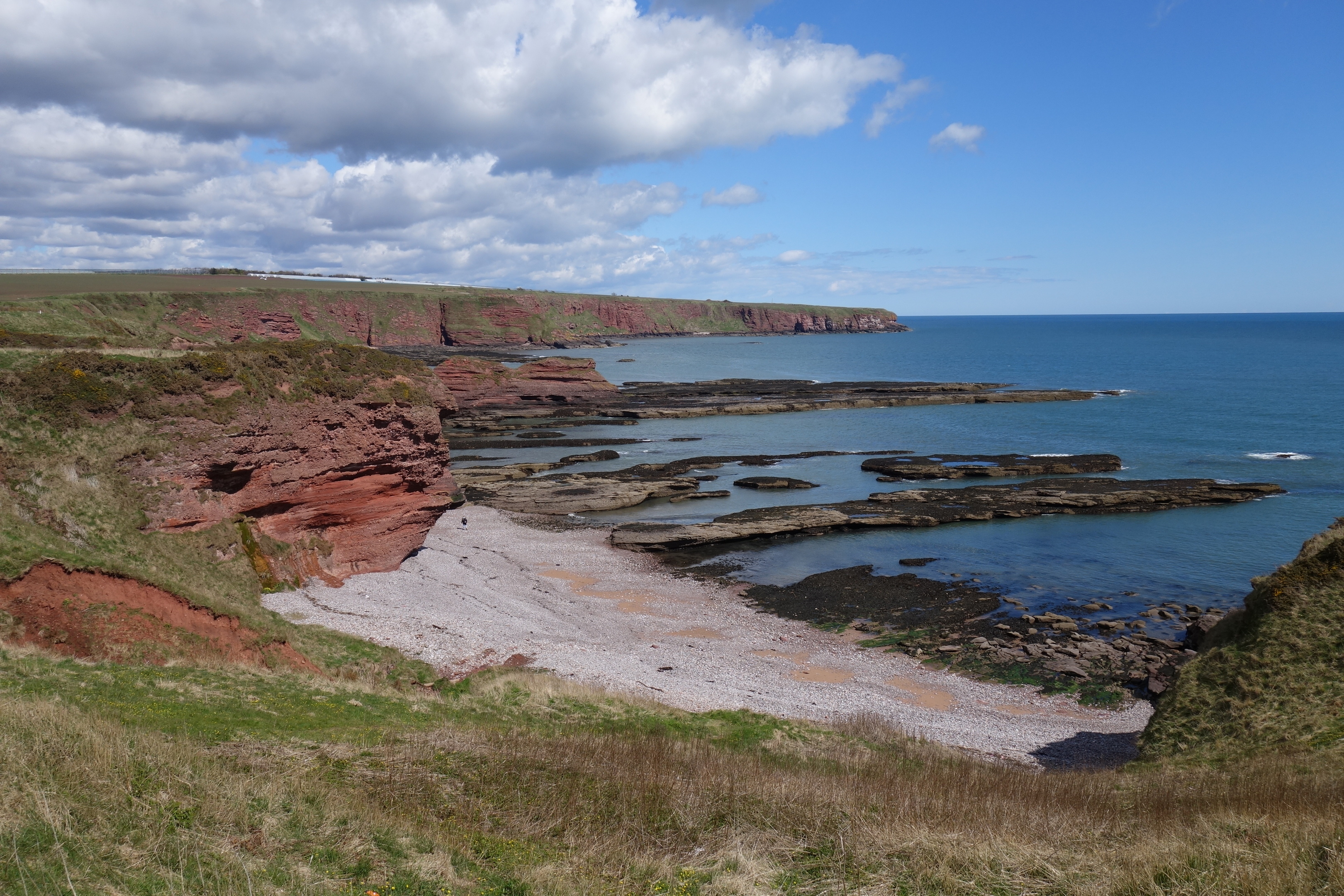“Carlinheugh Bay and Castlesea Bay – what wonderful places for wildflowers are the sea-meadows of these sheltered havens near Auchmithie.”
So wrote Colin Gibson, whose weekly Nature Diary in The Courier enthralled readers from 1954 to 1998. The sandstone cliffs between Arbroath and Auchmithie were clearly a place that captivated him, and in an entry for June 1980 he noted that many of these seaside flowers were yellow such as hawkweed and tormentil ‘with its four small petals arranged like a Maltese cross’.
One yellow flowering plant he didn’t mention –probably because they are past their best by June – is the cowslip and I enjoyed finding their beautiful blooms on a recent walk along these airy clifftops.
They were just beginning to flower – but unlike the related primrose – their drooping yellow flowerheads are held aloft on stalks. Cowslips are rather local in Scotland and tend to thrive best on short-cropped coastal grasslands such as Carlinheugh Bay, as well as St Cyrus and parts of the East Neuk. Almost as startling as the flowers are their strange crinkled leaves.
Many other wildflowers were around too including white-petalled scurvygrass and pink nodding patches of thrift. The leaves of scurvygrass are rich in vitamin C and the plant is so-named because in the past it was widely used to prevent the onset of scurvy. In 17th century England it was fashionable to partake in a tonic made from scurvygrass every morning, much in the same way as we would enjoy a glass of fruit juice today.
Such floral richness along these clifftops attracts many pollinating insects, and as I made my way past wonderfully named rock features like the Needle E’e and the Deil’s Heid, garden bumble bees and green-veined white butterflies rose in the sea breeze. A male kestrel made good use of the swirling air currents by hanging still in the sky, wings held stiffly and grey tail fanned so as to maintain station over a patch of beach meadow where voles are likely to occur.
The more gentle rocky clefts and gullies held nesting herring gulls, whereas kittiwakes preferred the steeper cliff faces. The gulls were already on eggs but the kittiwakes had yet to lay and were jostling for position for the best ledges. By the foamy sea edge guillemots, razorbills and shags had gathered on a natural rock platform as they too made their preparations for bringing the next generation into the world.
I ventured down a narrow path to one of the rocky beaches where a surprisingly confiding curlew-like bird eyed me up. It was a whimbrel, a scarce migrant on its way up the coast to breeding grounds in the far north.
This is such a sweeping and inspiring coastline, a myriad of caves, stacks and arches, of quiet bays and strange half-submerged rock shelves; the call of the seabirds and the vibrancy of the flowers all contributing to this picture perfection.
Info
Known as Seaton Cliffs, this area of coast supports a mosaic of habitats, including coastal grassland, sand dunes and woodland, supporting a diverse range of wildlife. Look out for dolphins offshore.
Download
Arbroath to Auchmithie Geodiversity Trail (PDF)










